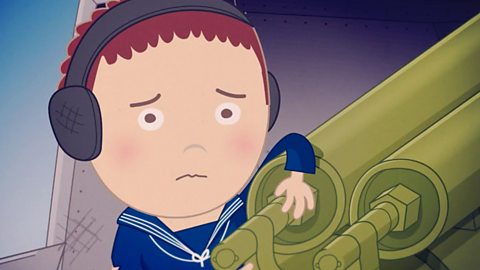Trench warfare

On the Western Front, the war was fought by soldiers in trenches.
Trenches were long, narrow ditches dug into the ground where soldiers lived.
They were very muddy, uncomfortable and the toilets overflowed. These conditions caused some soldiers to develop a problem called trench foot.
There were many lines of German trenches on one side and many lines of Allied trenches on the other.
In the middle was no man's land, which soldiers crossed to attack the other side.

Video: What were trench conditions like?
Watch our video to learn more about life in the trenches.
[SNARE DRUMS]
JACK: I don’t mind the rainy weather.
I quite like playing in the mud.
But I’d probably feel different if I was a soldier in the trenches during World War One.
WW1 SOLDIER JACK: Mud? Oh, we know all about mud here on the Western Front.
We’re living in it.
We’ve dug hundreds and hundreds of miles of these trenches.
They’re full of water in the winter.
Full of flies in the summer.
And full of rats all year round.
But they’re very important.
These trenches are the only thing stopping the enemy advance and, when we’re posted here, they become our home.
It’s like an entire town here.
We have operations dugouts to plan attacks.
We’ve built observation points to spy on enemy movements.
And if you’re injured you can treated at the medical post.
We get lunch from a cooking shelter.
It’s supposed to be meat and vegetable stew but my mate reckons we should fill the sandbags with it.
After repairing and cleaning the trenches in the afternoon we get the chance to grab some sleep or to read letters from home.
Reading them makes me feel happy and sad all at once.
But we can’t rest for long.
Soon it’s back to the firing trench because most attacks start at the end of the day, and we must be ready and alert.
I can see the enemy from here.
Imagine the length of a football pitch – that’s how close they are sometimes.
We watch each other as the sun goes down and all through the night.
And we think of home, our real home.
JACK: I can get out of the mid and the rain any time I want, but those soldiers couldn’t.
And lots of them never did get the chance to go home.
A typical day in the trenches
| Time | Activity |
|---|---|
| 5am | 'Stand-to' (short for 'Stand-to-Arms', meaning to be prepared for enemy attack) half an hour before daylight |
| 5.30am | Rum ration |
| 6am | Stand-down half an hour after daylight |
| 7am | Breakfast (usually bacon and tea) |
| 8am onwards | Clean selves and weapons, tidy trench |
| Noon | Dinner |
| After dinner | Sleep and downtime |
| 5pm | Tea |
| 6pm | Stand-to half an hour before dusk |
| 6.30pm | Stand-down half an hour after dusk |
| 6.30pm onwards | Work all night with some time for rest (patrols, digging trenches, putting up barbed wire, getting stores) |
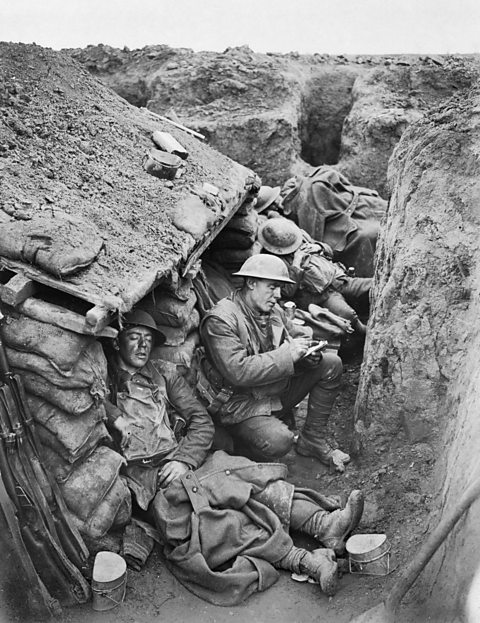
Soldiers only got to sleep in the afternoon during daylight and at night for an hour at a time. During rest time they wrote letters and played card games.
What items did soldiers keep in the trenches?
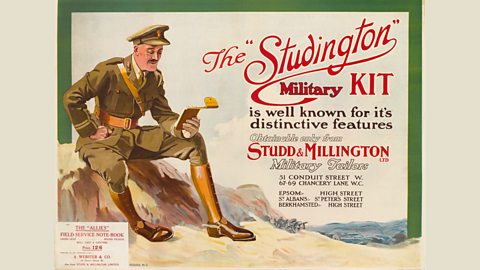
Image caption, Soldiers carried lots of equipment
This included a gas mask; weapons and ammunition; protective clothes like boots and a helmet; ‘webbing equipment’ which contained personal items like shaving kits and water bottles; and a shovel.
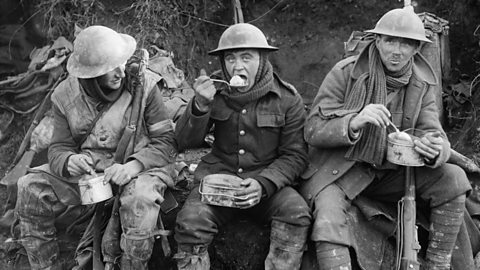
Image caption, Families sent parcels of food to their relatives at war
They sent items such as chocolate, tobacco and tinned food. By 1917 the ration for an average British soldier was just 6 ounces of 'bully beef' (called corned beef today).
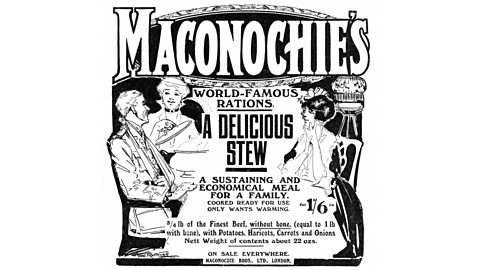
Image caption, Many soldiers ate 'Maconchie's meat stew' and hard biscuits
Sadly the meat was mostly fat. This and a shortage of fresh fruit and vegetables was responsible for many soldiers to suffer from upset stomachs!
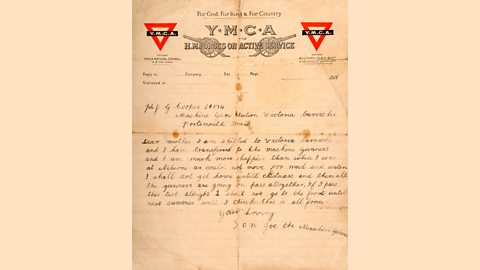
Image caption, Homesickness was a big problem
Soldiers were allowed to write letters home and were given free postcards or headed paper. But most letters were read by an officer who checked they did not give away secrets or spoil morale.
1 of 4
The Christmas Truce
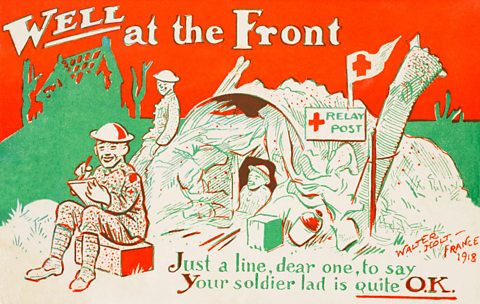
During the first Christmas of the war, something unique happened in some parts of the Western Front.
On Christmas Eve, soldiers from both sides put down their weapons and met in no man's land. They sang carols like 'Silent Night' ('Stille Nacht' in German).
Men from both sides gave gifts to each other. The Germans gave sausages to the British and the British gave the Germans chocolates.
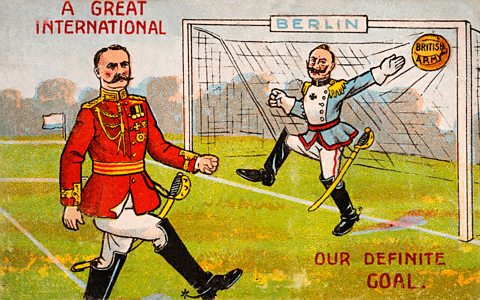
On Christmas Day, a British soldier kicked a football out of his trench and the Germans joined in. It was reported that Germany won the match 3-2.
The British High Command did not agree with this truce. They even suggested the Germans were planning an attack. They were ignored and no guns were fired on Christmas Day 1914.
The truce lasted until the New Year in some parts of the Western Front. But it wasn't long before soldiers on both sides returned to life in the trenches.
Activities
Activity 1: What things were in a trench?
Explore our interactive trench scene and click on different objects to find out more about them.
There are ten different objects to find. You can use the question mark button to highlight them all.
Activity 2: Quiz – Life in a trench
Activity 3: History Explorer game
Play this game to test your knowledge and learn even more facts about World War One.
History Explorer: Secrets through time
History Explorer: Secrets through time: KS2 History
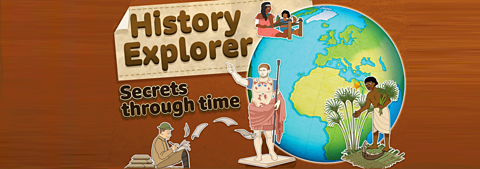
Teaching resources
There are even more World War One resources over on BBC Teach. Take your class on a journey through time with this collection of short videos covering an A-Z library of WW1.
BBC Teach has thousands of free, curriculum-linked resources to help deliver lessons - all arranged by subject and age group.
SAT’s preparation resources. activitySAT’s preparation resources
Get ready for the SATs papers with videos, activities, quizzes and games to refresh your knowledge and practise your skills.

More on World War One
Find out more by working through a topic
- count5 of 43
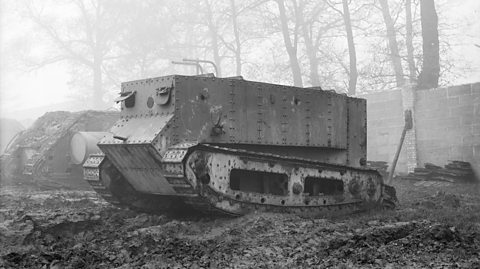
- count8 of 43
